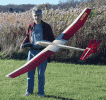|
Thermodynamics
is the field of physics that describes and correlates the physical properties of macroscopic systems of matter and
energy by relating such qualities temperature, pressure, and volume. It also takes in energy, heat, and work. When
a physical system moves from one state of equilibrium to another, a thermodynamic process is said to take place. The
laws of thermodynamics were discovered in the 19th century through painstaking experimentation.
From
Wikipedia:
"The first established principle of thermodynamics (which eventually became the Second Law) was formulated
by Sadi Carnot in 1824. By 1860, as found in the works of those as Rudolf Clausius and William Thomson, there were
two established "principles" of thermodynamics, the first principle and the second principle. As the years passed,
these principles turned into "laws." By 1873, for example, thermodynamicist Willard Gibbs, in his “Graphical Methods
in the Thermodynamics of Fluids”, clearly stated that there were two absolute laws of thermodynamics, a first law
and a second law."
| When each of two systems is in equilibrium with a third, the first two systems must be in equilibrium with
each other. This shared property of equilibrium is the temperature. The concept of temperature is based on this
Zeroth Law. |
Because energy cannot be created or destroyed (with the special exception of nuclear reactions) the amount
of heat transferred into a system plus the amount of work done on the system must result in a corresponding increase
of internal energy in the system. Heat and work are mechanisms by which systems exchange energy with one another.
This First Law of thermodynamics identifies caloric, or heat, as a form of energy. |
Entropy—that is, the disorder—of an isolated system can never decrease. Therefore, when an isolated system
achieves a configuration of maximum entropy, it can no longer undergo change (it has reached equilibrium). Additionally,
it is not enough to conserve energy and thus obey the First Law. A machine that would deliver work while violating
the second law is called a "perpetual-motion machine of the second kind." In such a system, energy could then
be continually drawn from a cold environment to do work in a hot environment at no cost. |
The Third Law of thermodynamics states that absolute zero cannot be attained by any procedure in a finite
number of steps. Absolute zero can be approached arbitrarily closely, but it can never be reached. |
|








